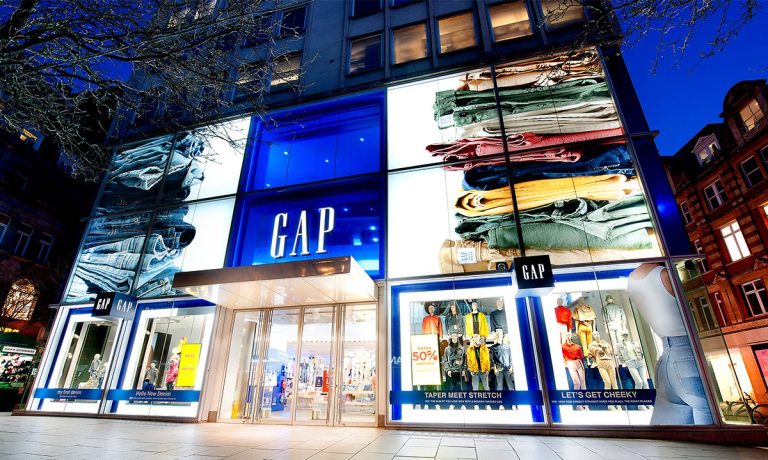
Gap is integrating its credit card and loyalty programs across all four of its brands in an attempt to simplify the consumer experience, as retailers prepare to unveil a glut of new rewards programs ahead of the holiday shopping season.
Through the newly streamlined program, rewards members will earn one point for every dollar spent at Old Navy, Gap, Banana Republic and Athleta, and cardmembers will earn five points for every dollar spent.
The program also has new tier levels based on annual spend, and will no longer require Gap to send customers a rewards certificate when they reach 500 points. Instead, customers will be able to redeem points as they go for every 100 points they earn, which Chief Digital and Technology Officer John Strain said is “a super-important unlock, because it does mean you can spread your rewards more easily across different brands.”
Strain said in an interview with PYMNTS that moving to one membership plan for Gap’s four brands comes from a “consumer-curious” approach in which the company surveyed and interviewed customers about nearly every detail of the rewards program. Two key takeaways were that the rewards program should be easy and should provide customers with choice.
“The fact that we’re able to actually sync this up between the website, stores, mobile … all across the board is really geared toward providing that choice to our customers and really enable them to get after it,” Strain said. “So we’re excited to be able to get the program to a good and interesting place here.”
Rewards Bonanza
The integration follows a relaunch of Gap’s loyalty program less than a year ago, in which Gap’s Bright Rewards was replaced with a program that has a different look and feel for each of the four brands.
“One membership [with] four branded expressions helps to enable a cross-brand part of the story … but really, I think it’s an opportunity for them to hear from the brands they signed up with” without having to sign up four times, Strain explained. “It enables us to provide that more holistic family of brands capability, and I think they reinforce each other,” he added.
Since relaunching the loyalty program in September, 19 million new customers have been enrolled, bringing the total card members and rewards members in the integrated program to 37 million.
Gap is hardly the only company focused on turning customers into loyalists. Salesforce projects that there will be 1,000 new programs in the U.S. over the next six months as retailers begin to look for marketing opportunities beyond cookies and ad-tracking, and that the share of online orders redeeming loyalty points will increase by 76 percent in November and December.
Still, Strain said Gap is confident that the integrated rewards program will be successful based on the retailer’s research and feedback from consumers. “Customers are getting a lot more value overall, so we’re excited about how that’s coming together … to really make it fit what our customers told us was important to them,” he noted.
PYMNTS data shows that nearly 40 percent of consumers have used or would use a rewards program, and over 45 percent say that a rewards program is an important feature for a merchant to have. Almost 94 percent of the top-performing merchants offer a rewards program, compared to just 8 percent of the bottom-performing ones.
Growth Strategy
Gap is in the midst of a three-year growth strategy, called Power Plan 2023, that sees the company moving away from malls and focusing on the consumer experience both in-store and online.
The plan, which was unveiled in October, places an emphasis on growing Athleta to a $2 billion brand, up from $1 billion in 2020, and calls for the closure of 350 Gap and Banana Republic stores between 2019 and 2023. Many of the closures will come as leases expire, Gap has said; by 2023, Gap plans for 80 percent of its stores to be outside of malls.
Additionally, in the past several months, Gap dropped the first item from its partnership with Kanye West’s Yeezy brand to great excitement; and the company launched a partnership with Walmart in its first foray into home décor.